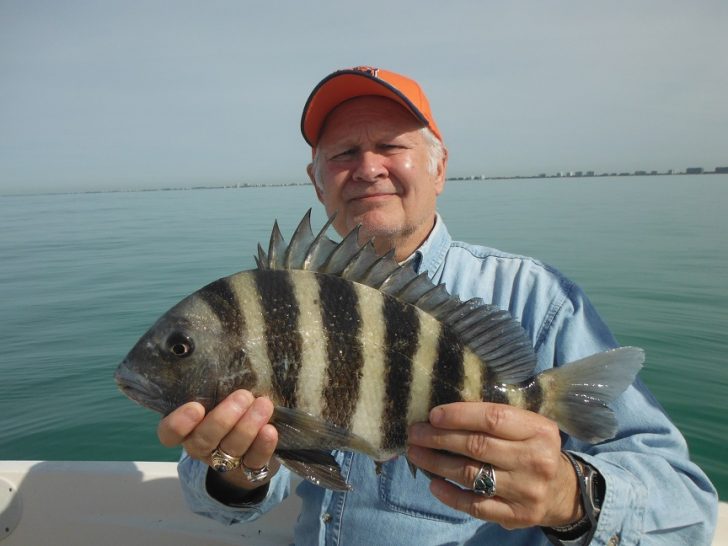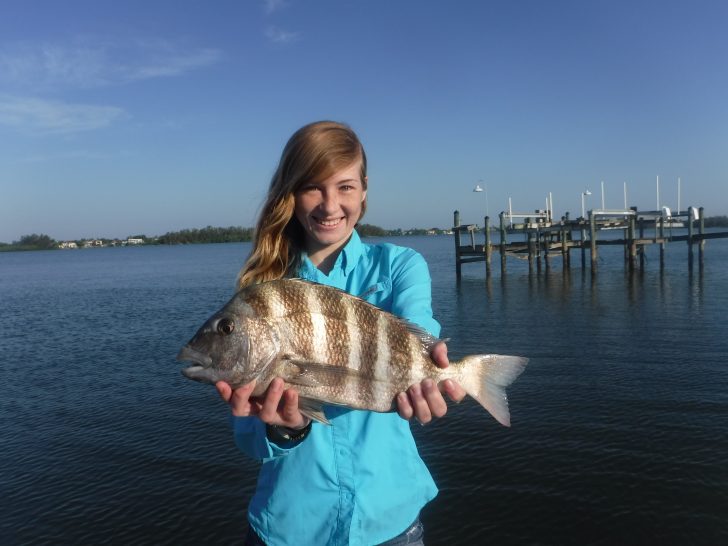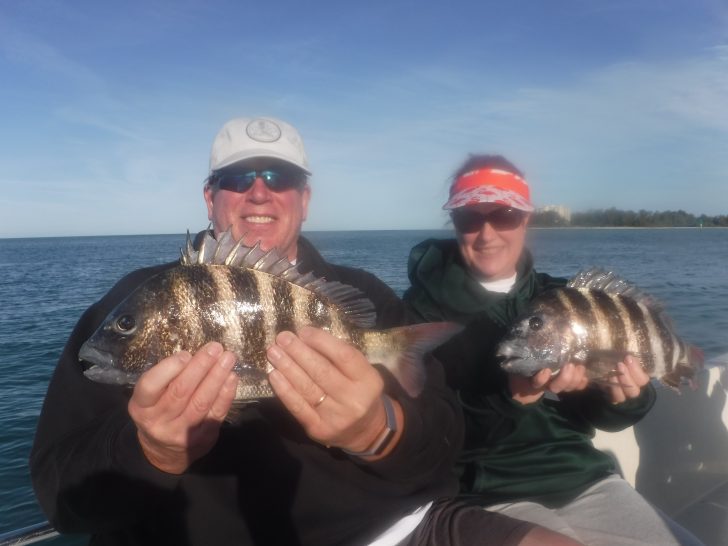Capt. Jim Klopfer
February can pose some challenges to anglers on the Suncoast. The water can be cold and dirty, sending fish scurrying off of the flats. Wind can make casting difficult. Tides are so low that it can be tough getting around. Fortunately, there is one species than anglers can count on despite these conditions; sheepshead!
Sheepshead are a member of the porgy family. There are available most of the year, but their numbers greatly increase in the winter. They are found around docks and oyster bars at Christmas and by February the passes will be thick with them. Just about any structure including rocks, docks, bridges, or ledges in or near the passes will hold sheepshead in February. Very few sheepshead are caught by anglers casting lures, they want the real thing. Shrimp are the most popular bait as they are readily available. Some veteran sheepshead anglers prefer to catch oyster crabs or fiddler crabs on the low tide. Sand fleas work as well. However, shrimp are easy to get and use and work fine most of the time.

Basic bottom fishing tackle and techniques produce sheepshead. In shallow water, a hook with a split shot or two is all that is required. In slightly deeper water, a small egg sinker can be used. In depths of 10’ or less, it is usually best to anchor a short distance away and cast to the structure. In deeper water, a vertical presentation works well. One simple rig that works very well is the “knocker rig”. With this rig, the sinker sits right on top of the eye of the hook. Some anglers think the sinker will spook fish, but it does not. This makes for easy sinker weight adjustments and tackle changes. A 24” piece of 30lb fluorocarbon leader is used when fishing around structure. Anglers can use circle hooks, “J” hooks, or even jig heads to present baits to sheepshead. Many have gone to circle hooks since they are required when fishing for reef fish, which are often mixed in with sheepshead. The exact wording is; “When fishing with natural bait, non-stainless steel, non-offset circle hooks are required”. #1 “J” hooks or #2/0 circle hooks are good all-round sizes.
Sheepshead are notorious bait-stealers. One technique that will help anglers hook more sheepshead is to not set the hook. This is especially true when using circle hooks. Anglers will often feel a series of “taps”. They should not more the bait at this time. Instead, wait for a steady pull. When this occurs, the angler should reel quickly then slowly raise the rod tip. Sheepshead are plentiful and tasty, but anglers should be responsible in the amount of fish that are kept. Despite their numbers and the generous limit (8 per person, 50 per boat in March and April), over-fishing can occur.


